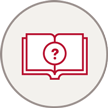Managing and Treating the Neurogenic Bladder
There are several options for managing and treating neurogenic bladder. Explore the most commonly prescribed options.

Learn about treatment options for neurogenic bladder.
If you have been diagnosed with neurogenic bladder, the next step is for you and your healthcare team to make a plan for managing and treating the condition. Every neurogenic bladder is unique, so there is no one-size-fits-all treatment plan. Once the exact nature of your condition is diagnosed and any surgical options have been discussed and eliminated by your doctor, the next step is to learn how to treat and manage neurogenic bladder.
Treatment and management goals
If you are experiencing the symptoms of neurogenic bladder dysfunction, your healthcare team will work to devise a plan that could reduce or possibly eliminate these issues. Other goals might include preventing urinary tract infections and other bladder-related issues. Finally, your plan should be compatible with your lifestyle.
A treatment and management plan for neurogenic bladder usually includes three components:
1. Medications
People with neurogenic bladder often benefit from one or more medications that help their bladder store urine more effectively, or that help the bladder and the sphincters operate better.
- Anticholinergics are medications that may decrease bladder spasms, and can help reduce urinary incontinence. This medication is available in pill form and in skin patches.
- Botulinum toxin (Botox) injections may help with overactive bladder symptoms. The doctor will inject this medication into the bladder or urinary sphincters.
- Other medications are also available. Ask your healthcare provider about medications that might be best for you.
2. Fluid intake
All of us need to drink enough fluid to promote healthy kidney function. The amount and type of fluids you should drink depend on your unique situation and the type of bladder problems you have.
If your bladder tends to empty frequently or leak urine, you may find it best to limit your intake of beverages containing caffeine (i.e., coffee, tea, and carbonated drinks). Caffeine can increase bladder activity, causing your symptoms to worsen. Alcoholic beverages can also stimulate the bladder to empty, so you may want to limit these as well.
If you are prone to frequent urinary tract infections (UTIs), your healthcare provider may recommend that you increase the amount of water you drink. If nighttime urination is a problem, stop drinking fluids a few hours before you go to bed.
Some people believe that drinking cranberry juice helps prevent UTIs, however, clinical studies have not shown this to be effective. In addition, it should not be consumed if you are on the blood thinner Warfarin (sometimes referred to by the brand names Coumadin and Jantoven). In addition, be sure to discuss any special dietary or herbal remedies you are considering with your healthcare provider.
3. Catheters
A catheter is a small hollow tube inserted into the bladder to drain urine when the bladder can’t empty on its own. If the catheter is intended to stay in the bladder for hours, days, or longer, it is called an indwelling catheter. If the catheter is inserted to drain the bladder and then removed, it is called an intermittent catheter
Collaboration is key when it comes to neurogenic bladder treatment
Work closely with your healthcare team to find the most effective way to manage and treat your neurogenic bladder. It may be a combination of treatment options, or simply a catheter. Together, you can find what works best for you.
- 0 Shares
- 31 Recommended





 Call Us
Call Us  Email Us
Email Us  Join Us!
Join Us!  Sign Up
Sign Up 